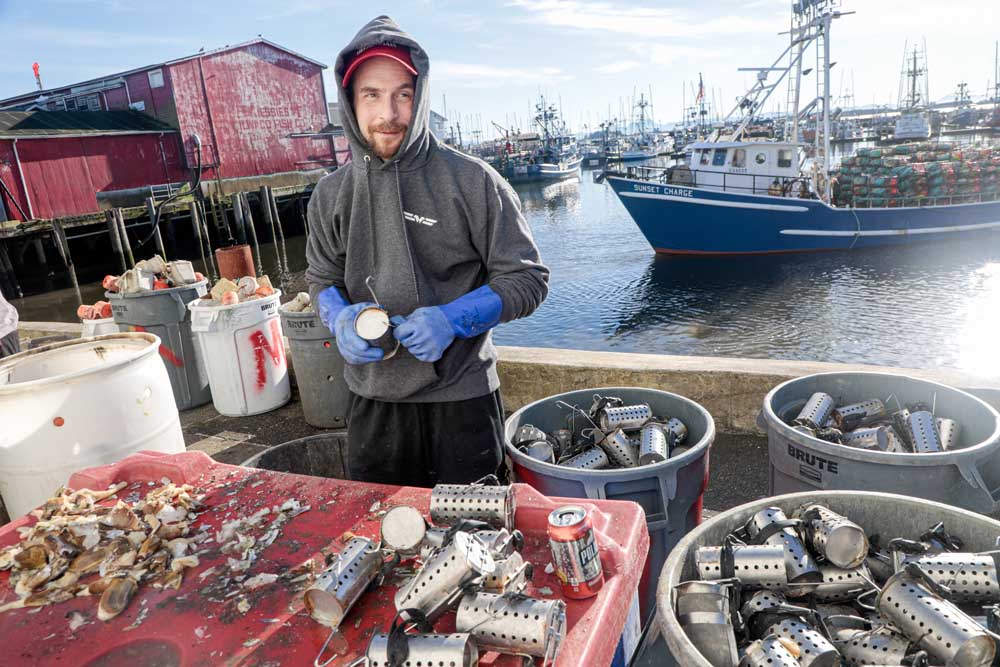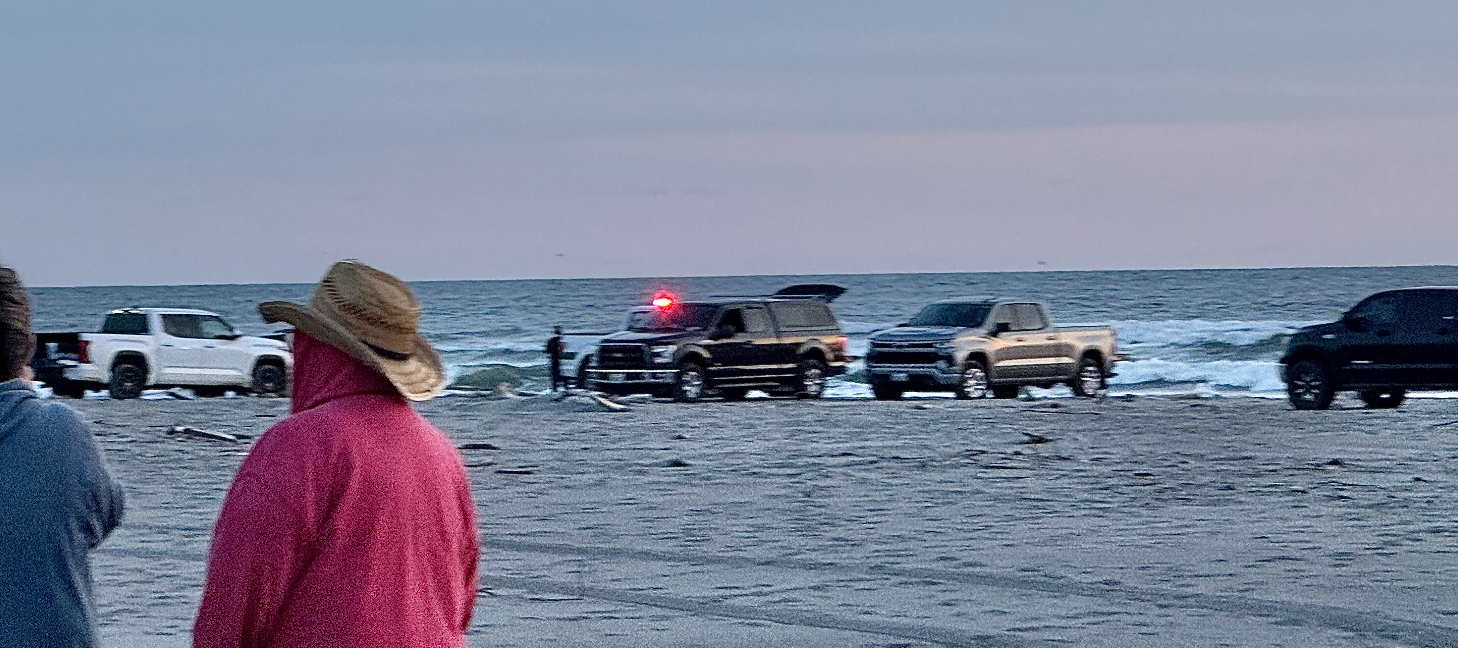Crabbers get cracking: Optimism abounds after long delay
Published 2:00 am Friday, January 10, 2025

- “You want an oily fish, mackerel is nice and oily,” said commercial fishermen Jerry Matzen III as he stuffed crushed razor clams into stainless steel bait jars in preparation for the upcoming commercial crab season, while fellow crew Tanner Bonawitz and Jake Pedersen prepped frozen Pacific mackerel, cutting it into chunks before piling it in into plastic bait containers.
ILWACO — “You want an oily fish, mackerel is nice and oily,” said commercial fisherman Jerry Matzen III as he stuffed crushed razor clams into stainless steel bait jars. Fellow crew Tanner Bonawitz and Jake Pedersen prepped frozen Pacific mackerel, cutting it into chunks before piling it in into plastic bait containers.
Clams and mackerel are a popular combination among commercial Dungeness crab fishermen, Matzen explained, many of whom were busy prepping bait and loading pots Thursday afternoon, Jan. 9, in local ports, final duties before the Washington commercial Dungeness crab fishery officially commences.
Following a roughly six-week delay, the 2025 season is set to begin 8 a.m. Sunday, Jan. 12, with harvesting at 9 a.m. Wednesday, Jan. 15.
The commercial season can begin as early as Dec. 1, but rarely does so. The commercial season started on time in 2021-22 and 2014-15, but has often been delayed in recent years due to price negotiations, low-meat yield or elevated levels of domoic acid. The 2020-21 season had the longest delayed start in history — it took until mid-February before crab were clear of toxin.
Rich crabbing groundsIn the 2023-24 season, Washington commercial crabbers caught a total of 17.57 million pounds of Dungeness crab, generating an ex-vessel value of $66.9 million.
About 10.47 million pounds, or 60%, was caught in the area from the Columbia River north to Pt. Chehalis (Westport), including the crab-rich waters just off Long Beach. Willapa Bay accounted for 987,212 pounds, or 6% of the statewide catch.
The season was delayed until February last year, with 95% of the catch coming in the first three months of the season. Late starts usually mean somewhat safer marine conditions, but can impact the price paid to crabbers.
Total harvests the last two seasons have been among the best in more than 15 years in the crabbing grounds from the Columbia River north to Westport, accounting for more than 23 million pounds. The crab population historically cycles up and down, with abundant periods typically followed by lean ones.





